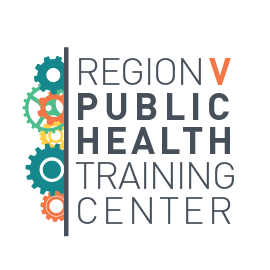By Isabelle Birt, MPH
Cover Image Source: Canva
Is racial diversity in the public health workforce worth focusing on? The short answer is, yes. The long answer is that a racially diverse public health workforce is needed to address the health and wellbeing of a diverse population, and although the US population has become increasingly diverse over time, there is still work to be done to have this diversity reflected in the public health workforce. We’ve seen more attention given to diversity, equity, and inclusion (DEI) efforts in recent years– and that’s good! But more attention is needed. Because, much like anything in public health, the need for increased diversity in our workforce will not be met on its own.
We need continued discussion, shared understanding of the importance of diversity, and a commitment to action in order to achieve this goal.
A public health workforce that is representative of the population it serves is better equipped to address the unique needs of their community. Diversity allows for individuals of different backgrounds and experiences to bring their unique perspectives into the workplace. These varied experiences can help improve public health programs and actions by ensuring that they are representative of the needs of a diverse population. In fact, a recent study showed that a diverse nurse workforce was linked to a lower risk of having severe adverse maternal outcomes from childbirth for mothers of color as well as white mothers. This lower risk of adverse health outcomes ranged from 20% lower risk among Black mothers to as high as 50% among Asian and Pacific Islander mothers.

Image source: Unsplash (photographer: 东旭 王)
White employees still make up the majority of the workforce in local, state, and federal health departments, and this discrepancy is even greater among supervisory roles. This disparity in the percent of people of color filling supervisory or managerial positions is incredibly important to focus on, as it can hinder our efforts to diversify the workforce. Findings from the Public Health Workforce Interest and Needs Survey (PH WINS) of 2021 showed that employees who identified as Black, Native American, Alaskan Native, or by two or more races/ethnicities, were less likely to feel that supervisors respect all employee backgrounds, and less likely to respond that their supervisor treats them with respect. The survey responses also indicated that employees of color felt less satisfied with their wages compared to white employees. These disparities in workplace experiences point to much needed improvements in workplace culture that both affect, and are affected by, DEI in the workplace. It’s a vicious cycle where lack of diverse leadership and representation leads to poorer workplace culture for employees of color, which leads to difficulty in recruitment and retention of a diverse workforce, and the cycle repeats.

Image source: Unsplash (photographer: @wocintechchat)
This is where a commitment to action is vital to breaking the cycle. This action can take many different forms and will likely look different depending on the unique makeup and needs of your agency and community. Fortunately, there are tons of resources out there to help you get started, and we’ve included some at the bottom of this page. By reading this far, you’ve already shown an interest in learning more – which is the first step! Keep the process going by continuing to learn, engaging in conversations around workplace diversity, and committing to making a change for the benefit of the public health workforce and the communities we serve.
To learn more, check out these resources:
- Diverse Nurse Workforce Linked to Better Maternal Health Outcomes in Childbirth
- Understanding the Dynamics of Diversity in the Public Health Workforce
- Enhancing the Diversity of the Public Health Workforce
- Strategies to Support Wellbeing and Retention of BIPOC Staff
- Equity in Motion: Moving Beyond the Conceptual Into Actionable
- Implicit Bias: Using Brain Science to Understand, Recognize, and Counter It
- Implicit Bias in Public Health Practice

